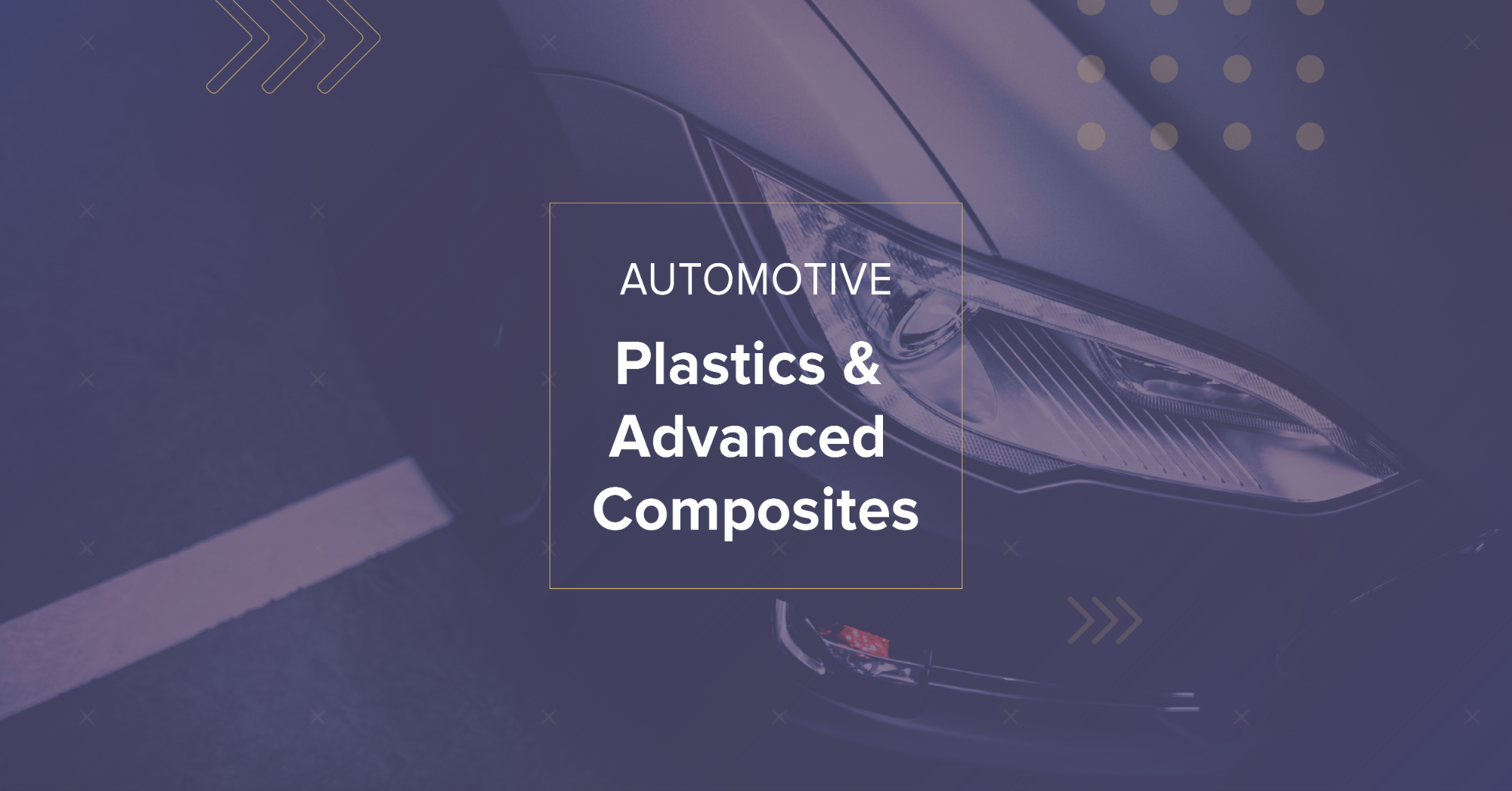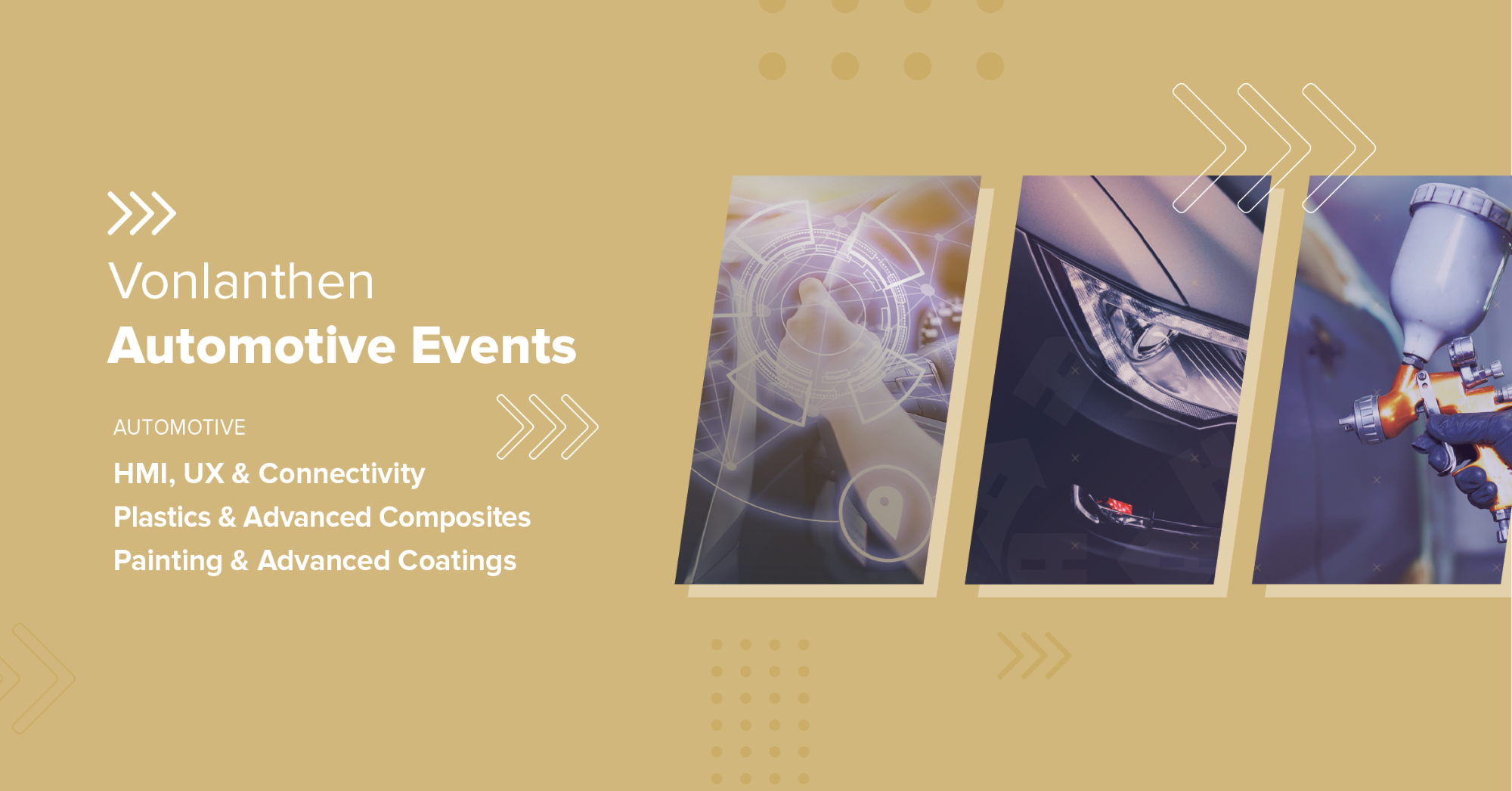News

Second day of Triple Automotive event was reserved to our 5th Automotive Plastics & Advanced Composites Summit
The fifth edition of the Automotive Plastics & Advanced Composites Summit hosted ten industry professionals that shared insights into their current practice. Introduction notes by Dr.-Ing. Timo Huber were motivating and the Interactive platform provided open space for follow-up questions and lively discussions.
Nicolas Batailley | eMobility Marketing Manager | Solvay
What are the main challenges of the eMobility for the plastic composite industry? Nicolas shared the latest insights and trends and introduced new material solutions for new needs.
Questions answered during the webinar:
- Have you done any crash performance on the battery case? is the case cost and weight saving shown made using glass long fibers or CF or hybrid glass+CF?
- How much percentage of AMODEL consists of bio-based feedstock?
- How high is the bio content in %?
- What is the bio-based feedstock for the bio-based PPA?
- Talking about e.g. copper or other elementary raw materials:
- What is your view if there is simply enough of those essential materials to achieve the future goals towards electrification?

Daniel Tyrkas | Director of Automotive Solutions | Mitsubishi Chemical Europe
Daniel explored the topic of biobased and sustainable polymer solutions for automotive applications. What are the suitable materials for automotive interior & exterior applications? This presentation was full of examples and case studies. Get a recording to see the whole session and answers to follow-up questions.
Questions answered during the webinar:
- You mentioned the Coronacrisis as a catalyst to start using more sustainable sources.
- What is MCCP's view in general about traveling & transport reduction, local production, sustainable sources a.s.o.?
- The piece of ABS-PC in unpainted piano black, what result does it have with the chemical and scratch resistance test?
- You mentioned good radar transparency of your bio-based substrate. Does it mean "equal" to conventional types?
Dr. Nicolas Dufaure, FR | Global Business Development | Manager Transportation | Arkema
Dr. Nicolas Dufaure's topic: High-Performance polymers for hydrogen tanks and hoses opened discussion of technical requirements of barrier materials for hydrogen (tank liner and hose barrier layer). Impact of the process on material properties, and comparison of mechanical and permeability properties of main solutions, or Innovative solutions for thermoplastic-based composites was also a part of this very well-executed presentation.
Questions answered during the webinar:
- What is the target market for H2 tanks? Trucks, cars....and what about the geographic distribution of this market?

Dr.-Ing. Timo Huber, DE | Vice President | Advanced Composite Technology Center ACTC, Hengrui Corp. HRC
Timo was an excellent and engaging moderator and speaker. He prepared a presentation about advanced composite lightweight solutions for automotive and aerospace applications. Lightweight solutions as a key factor for sustainability in future mobility, and advanced techniques for innovative lightweight solutions – from engineering to series production - Composite battery housings for E-mobility applications - Structural aerospace components made by high-volume HP-RTM processing.

Dr. Reiner Nett, DE | Managing Director | Kegelmann Technik
Dr. Reiner Nett engaged the audience with a talk on the quality process for industrial 3D-printing polymer applications. AM-technologies, AM opportunities, SLS process analysis, Quality circle, Industrial applications, AM challenges, and next steps.
Questions answered during the webinar:
- Did you metal plate your AM parts? What methodology do you use to plate these parts?
- The current plating process requires polybutadiene embedded in plastic. Is chromed the finishing you applied?
- Can you provide a price projection of AM-products compared to other production methods?
Maurizio Servetti, IT | Plastics Technical Manager | Materials Engineering Department | Stellantis
Maurizio Servetti paired up with Luca Gili to deliver a presentation on sustainability drivers and strategies, today and tomorrow use of sustainable materials in automotive. Their talk covered: Biomaterials - explanations and examples of applications, Recycled materials: strategies for use improving and examples of current applications. Get the recording to watch their presentation and all the live answered questions.
Questions answered during the webinar:
- What are the plans of Stellantis regarding End of Life Vehicles/recycling / 2nd life of batteries?
- Of the 150-180 kg of plastics used in cars, what share of that is aimed to be replaced by recycled materials e.g. by 2030?
- What would be the approach to bio-based products from an environmental/fungus point of view?
- How would you rate recycled materials vs biobased materiel
- In a lot of cases recycled materials especially PCR/PIR are more expensive than virgin materials, how is Stellantis/FCA dealing with this challenge?
- What is your view on chemical recycling?
- Has Stellantis any point of view regarding the difficulty to recycle plastic parts? I'm thinking in chrome-plated parts or painted
- By using bio-based and recycled materials, the current specs will change somehow?

Lasse Staal, DK | CEO | AddiFab
Freeform injection moulding – leapfrogging the gap between prototyping and production. Automotive product lifecycle management (PLM) has seen little impact from AM
a. The gap between prototyping and production remains
b. Lead times remain a challenge, especially for complex components
c. Hyper-flexible production remains at the concept level
Freeform Injection Moulding (FIM) is an attempt to resolve these challenges. By combining AM design freedom, short lead times, and low startup costs with injection moulding versatility and scalability, FIM allows manufacturers to leapfrog the gap that exists between conventional prototyping and production. FIM supports seamless scalability, dramatic lead-time compression, and is the hyper-flexible complement to conventional high-volume injection moulding. For this reason, FIM is ideally suited for some of the most demanding applications in automotive product lifecycle management:
a. New product introductions, where FIM allows dramatic lead-time compression and new design freedom
b. Mass customizations, where FIM allows batch-of-one injection moulding
c. Spare parts manufacturing, where FIM allows cost-efficient, low-volume production in the materials used for the original components.
Questions answered during the webinar:
- What is the dissolution mechanism used? Heat, solvent, etc?

Dr. Christof Kujat, DE | New Business Development Manager - Pigments for Plastics | BASF Colors and Effects GmbH
The smart coloration of engineering plastics in automotive applications. The functional coloration of plastics for automotive applications (Heat Management in interior and functional parts, Laser Welding). The coloration of engineering plastics: e.g. RAL 2003 for connectors (e-mobility). Piano Black for automotive interior applications – optimized dispersion to achieve the darkest shade combined with the best mechanics.

Giacomo Parisi, IT | Global Marketing Director Auto Electrification | DuPont Mobility & Materials
Topic: Challenges and solutions for advanced mobility: electric and autonomous vehicles. Main challenges for future mobility: thermal management, safety, durability & Solutions and new concepts for these challenges.
Questions answered during the webinar:
- What is the typical thermal conductivity of Nomex?
- Is there a specific grade of black for laser transmission? I'm thinking in LIDAR applications?
- Which considerations are made about the challenging task in car repair of color matching? Do paint suppliers add Sicopal and Spectrasense black to their mixing schemes?
- It is known that the radiation of light with a short wavelength more degrades the materials.
- What benefit is there in this technology if the most aggressive radiations are still absorbing as UV c, b?

All the questions were answered live. Get the recording to watch all the interesting talks. Are you interested in speaking at our next Automotive Plastics & Advanced Composites Summit? Become a speaker today.



